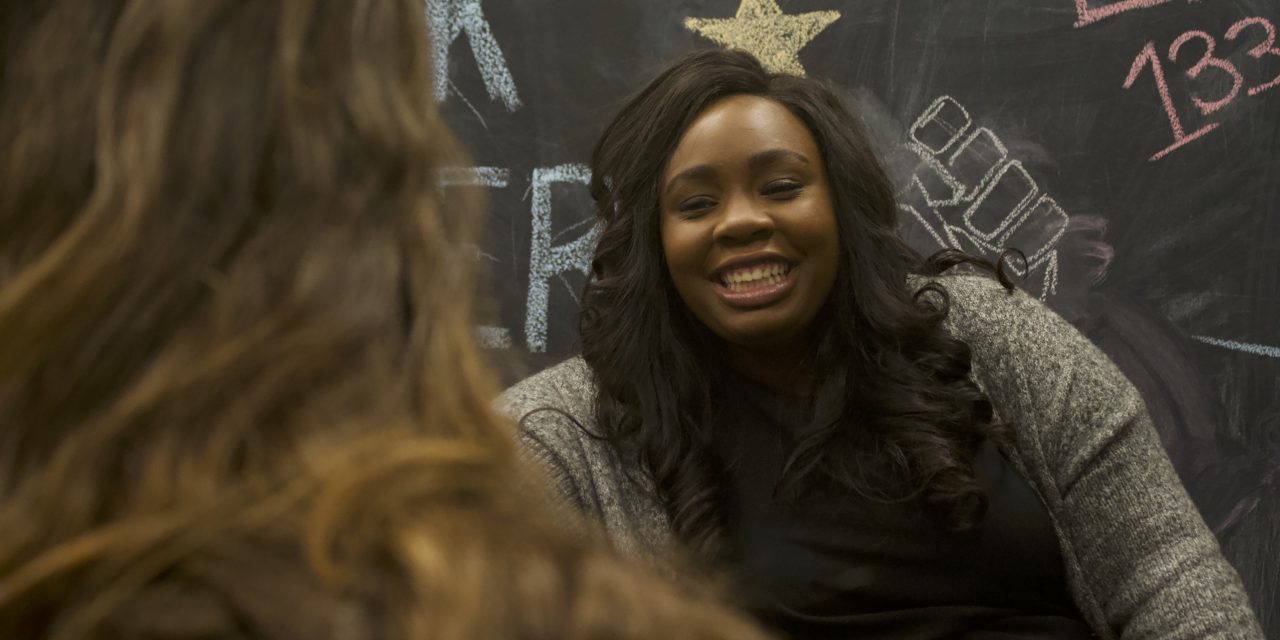STORY BY
Sara Beth Bolin
PHOTOS BY
Abigayle Williams
DESIGN BY
Justin Cenname
One of the most memorable moments from a campus tour is walking through Woods Quad, surrounded by history and grandeur, the crimson-clad tour guide carefully stepping backwards. She smiles at potential freshmen and tells them the story of the university’s first football game, how the boys on campus were rowdy from army training and studying all the time. The President of the university asked the boys what would appease them, and they had two requests: football and girls.
While that story makes the tourists laugh and provides a good segue into the story of the football game that occurred in Woods Quad in 1893, it isn’t completely true. Women did not get to campus at the request of boys; it was through the hard work of Alabama women vigorously advocating for the younger generation.
In the late 19th century, Julia Tutwiler led the movement to allow women to enroll at The University of Alabama. After years of lobbying the board of trustees and creating a campaign to further her wish, Tutwiler succeeded. In 1893, the first women stepped onto the campus as students.
As students, faculty, staff and alumni celebrate the anniversary 125 years later, women from all parts of campus are remembered for their fierce leadership, sisterhood and compassion.
“It’s going to be a great time to celebrate lots of different accomplishments and milestones for women along the way,” said Mary Lee Caldwell, director of the 125th anniversary celebration, as well as instructor for the Honors class “125 Years of Women at the Capstone,” surrounding the event. “There have been so many others that have played such a huge part and left a huge legacy at the university.”
The celebration aims to be as diverse as possible, including women who have made strides in athletics, STEM fields, as minorities and many other walks of life at UA. Each sector has seen a different path of transition regarding what it means to be a woman at UA.
Sarah Patterson, former head coach of Alabama’s gymnastics, is one example of these women. Patterson started working for the gymnastics team as a graduate student, but was offered the head coaching position with little financial aid. After Title IX was enacted, athletic departments were required to give equal amounts of scholarships to both men’s and women’s sports, as well as equal opportunity to participate. Because of this, in 1983, she was finally given small scholarships to recruit, and she took advantage of them. That year, the team went to nationals for the first time. They haven’t stopped since.
“In my eyes, this team changed the total landscape for women’s sports,” Patterson said. “Once we won, it was all about continuing that and to be the only team outside of football to win a national championship, as well as to create an opportunity for all these others women’s sports to flourish.”
The team thrived off of Patterson’s coaching and encouragement, in addition to her hounding the media for press attention. In 1997, Coleman Coliseum sold out a gymnastics meet for the first time ever. Patterson knew she had helped changed the way women’s sports were viewed, not only at UA, but around the country. The growth of women’s athletics coincided with the growth of women in other sectors, particularly science, technology, engineering and math, known at UA as STEM. When women first attended the university in 1893, there was an expectation they would study something “for women,” like language or arts. And while these deserve to be studied, women were excluded from male-dominated fields. Today, this is not the case.
“We have been growing by leaps and bounds in the past few years,” said Dr. Beth Todd, the advisor for the Society of Women Engineers. “But I would add that the numbers are still not what we would like.”
The Society of Women Engineers acts as a catalyst for women in STEM fields to form relationships with one another, as well as receive resources and support to thrive in their various disciplines. It also serves young women not yet in college, encouraging them to consider STEM fields as an option for career choice before they even arrive at UA.
“In order to grow the number of women in engineering, we need to start before they get to college,” said Katie Hiles, president of the society. “As long as we’re teaching young girls that this is a thing they can do when they get older, those numbers will grow.”

XXXI president, Alex Smith, comments on female leaders that have inspired her.
The celebration also includes the women leaders on UA’s campus, from student to administrative. The XXXI, an on-campus “women’s honorary,” strives to do just that by recognizing women from all over campus for their work in empowering women and serving the community.
“It’s very humbling and honoring to be in the presence of women that have made significant strides on campus,” said Alex Smith, XXXI president and Honors student. “These women are role models and inspirations because of the work they have accomplished. They are trailblazers. They are outstanding women.”
This year’s order of the XXXI is focusing on the women who have impacted the university who are not students, presenting the Shirley Watson award to a non-student who has influenced and empowered women throughout campus. The award will recognize women locally, statewide and nationally who have had significant impact on UA’s campus.
Many women honored by the XXXI are involved in many different branches of campus, spanning several majors, organizations and backgrounds which allow for a more diverse group of leaders. Beyond the XXXI, there are many women on campus who are celebrated and recognized for the work they’ve done both on and off campus.
“The women are there, they’re leading and the work is being done, but we need to realize it’s not always leading something that’s established,” said Candace Allen, president of the Black Student Union. “There are a lot of people who are going out of their way and saying ‘This doesn’t exist and it needs to exist for this group of people.’ They’re not always in the limelight and aren’t getting the glory.”

Candace Allen, president of the Black Student Union, discusses the history and influence of women of color on UA’s campus.
The campus has improved for women since they enrolled in 1893, but this improvement occurred in steps. Women like Autherine Lucy and Vivian Malone Jones helped pave the way for black women at UA. These women of color have not stopped blazing trails ever since they set foot on campus.
“We have to applaud and recognize those women who were brave and courageous enough to go into those male-dominated spaces and do the same and even more extraordinary things,” Allen said. “Especially people who experience an intersectionality of race and sex. All of those things are important when you’re making strides, and I would always love to see more.”
The culmination of women throughout history and currently on the UA’s campus has provided women the opportunity to thrive in ways beyond their imagination. The leaders who have supported the role of women at UA are some of the strongest in the nation, and UA continues to recognize the struggles and hardships, while celebrating the successes and achievements of these women.
“Through this celebration, we want to look back on the past, acknowledge where we are now and look towards the future of women on at the university.” Caldwell said.






